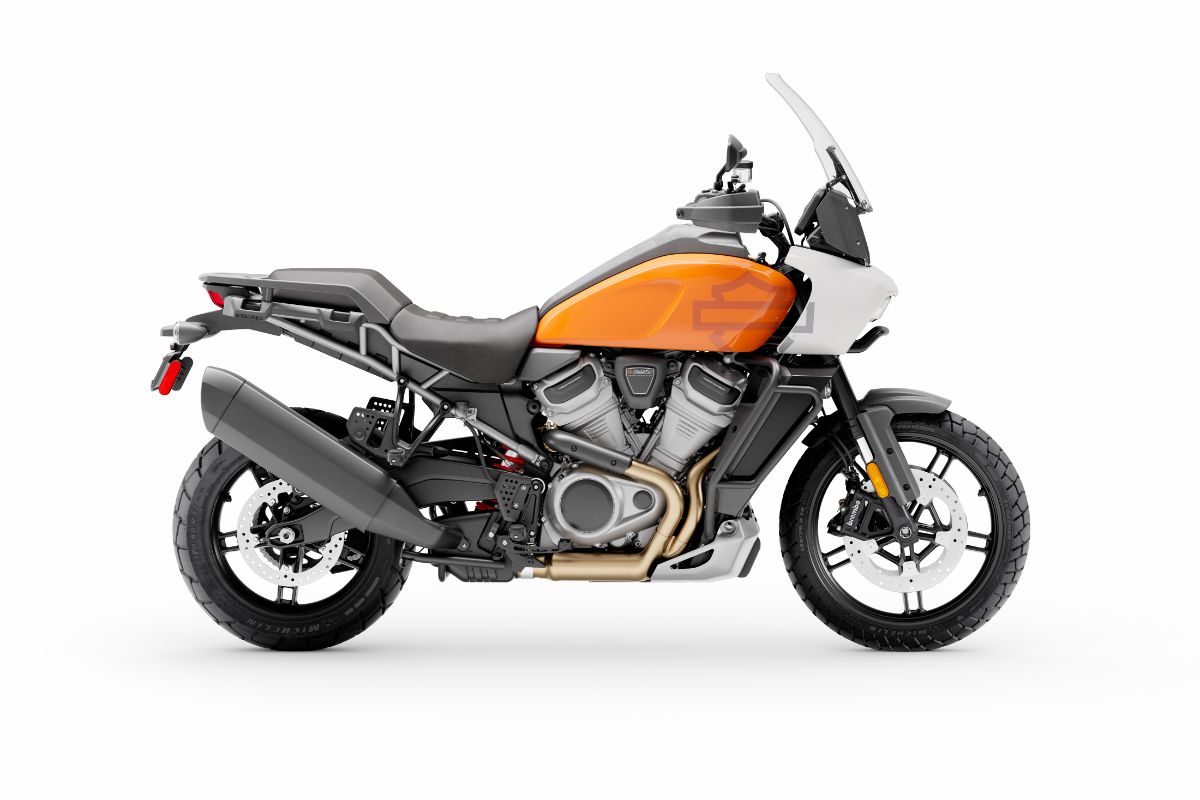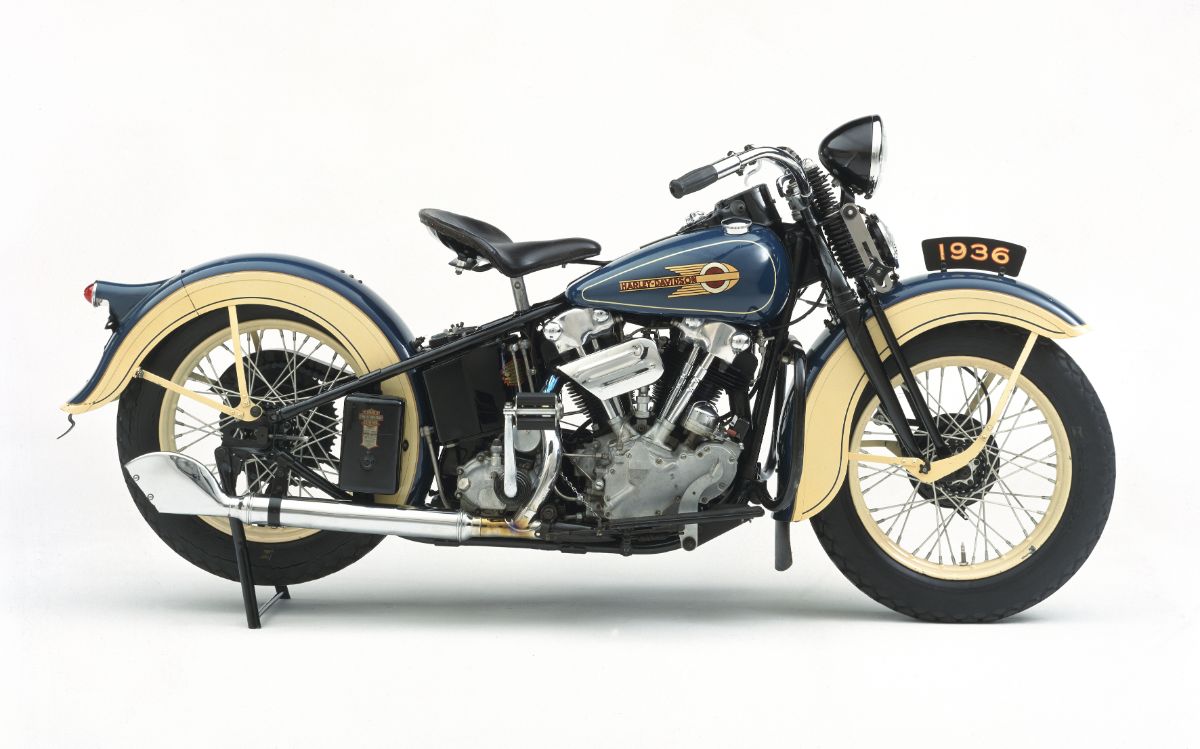With Harley-Davidson recently celebrating its 120th anniversary with a massive Homecoming celebration in its hometown of Milwaukee, USA, there’s never been a better time to look back at the landmark bikes that created the milestones for the world’s oldest motorcycle manufacturer to enjoy continuous production.
So, with help from Harley’s own museum, also in Milwaukee, here we pick out 12 classic bikes, one from each decade of Harley’s history, which helped make the legendary marque what it is today…
1903 ‘Serial No.1’
The first Harley, known as Serial No.1, was created after childhood friends Bill Harley and Arthur Davidson began experimenting with a prototype motorcycle and got Arthur’s brothers Walter and William involved. This is what they came up with. In truth, the example in the museum isn’t actually the first bike, but a close approximation to it, created out of a 1903 engine and 1905 frame. Due mostly to successful advertising and marketing, Harley-Davidson grew quickly expanding to a new factory in 1906 with production jumping from 50 machines that year to 450 in 1908 and 1149 in 1909.
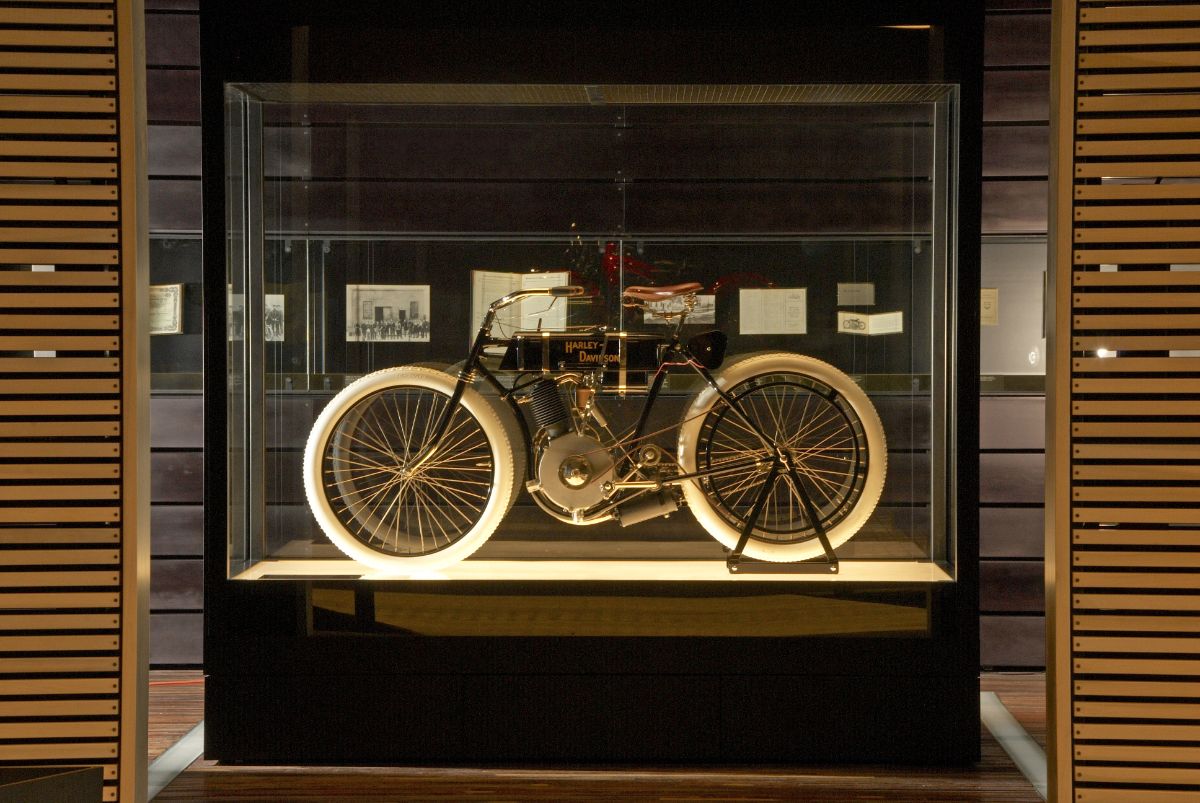
1911 First successful V-twins
Although Harley’s first V-twin, the engine layout with which it became synonymous, was launched in 1909, the Model 5-D (pictured), with flawed atmospheric intake valve technology, was a failure and immediately discontinued. Undaunted, a perfected design, the F-Head, was successfully launched in 1911 and by 1919 the marque was dedicated to the V-twin layout and soon, the biggest motorbike manufacturer in the world.
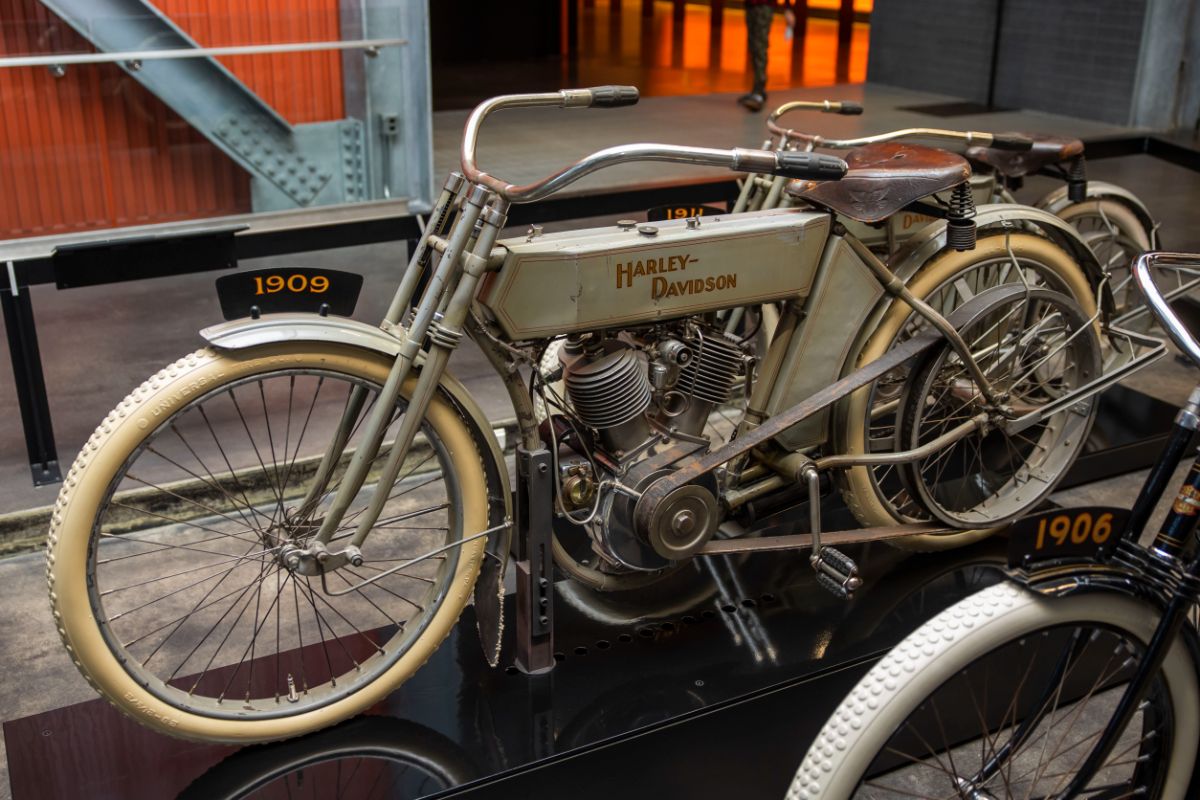
1923 First factory racer
The 1920s were boom years for Harley-Davidson and motorcycling in general. Racing became hugely popular, too, especially board track racing on specially constructed wooden ovals. Harley-Davidson produced this factory eight-valve racer for it, which was the first Harley to go over 100mph. Developed by William Ottaway and Henry Ricardo, each cylinder had two intake and two exhaust valves, the shortie exhausts had no silencers and each bike cost a whopping $1500. Board track racing, however, proved dangerous and costly to maintain and was soon replaced by flat track racing on dirt, which remains popular to this day.
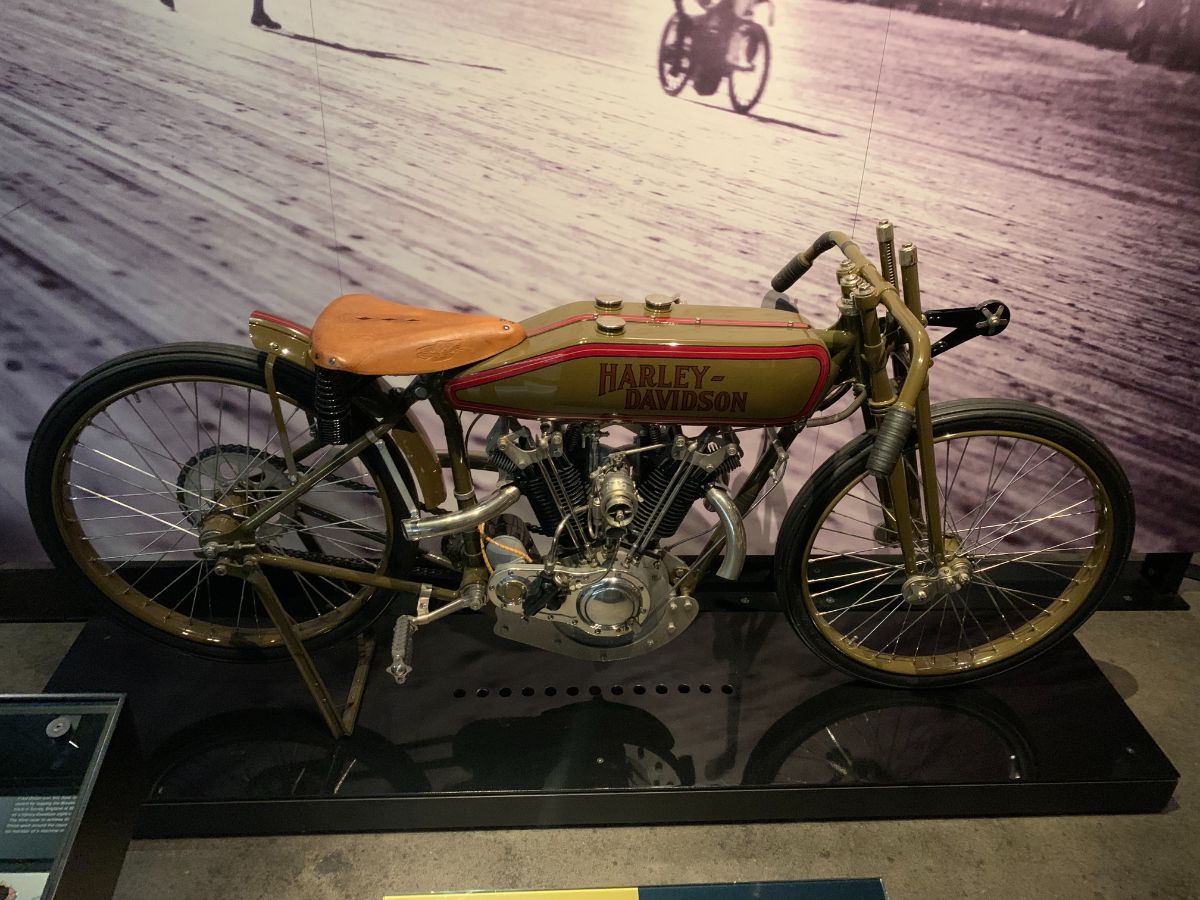
1936 Knucklehead survival
America’s Great Depression proved catastrophic for the US motorcycle industry with just Harley-Davidson and Indian surviving. A key reason behind Harley’s survival was the 1936 EL model. In the early 1930s Harley boldly started work on a new design which would propel the company into the future. The new engine, the ‘Knucklehead’, was the first with recirculating oil while the teardrop tank, valanced fenders and bold colours were also new. It was a huge risk – but a huge success, too.
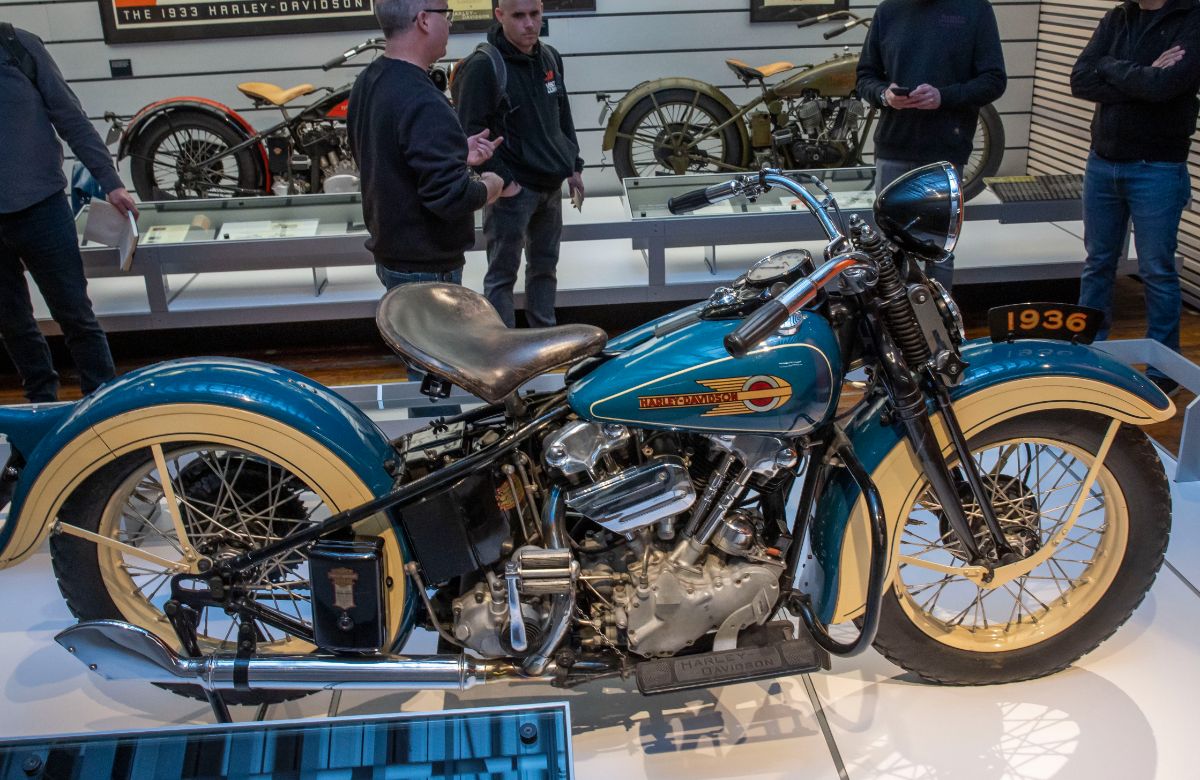
1942 Military might – WLA
With the arrival of WWII, Harley proved far more successful than rivals Indian at securing war contracts – a factory which helped ensure Harley’s survival while Indian succumbed in the early 1950s. This military version of the civilian WL was commissioned in huge numbers with around 60,000 built by the end of the war, being used not just by US troops but also British, French and Russian. Post-war surplus WLAs were also famously modified by returning GIs to become the first ‘bobbers’ – a custom style still popular today – and were commonly used by the rise of post-war biker gangs, most infamously the Hells Angels. The 1940s also saw the debut of the 1949 ‘HydraGlide’ – the first Harley-Davidson with telescopic forks.
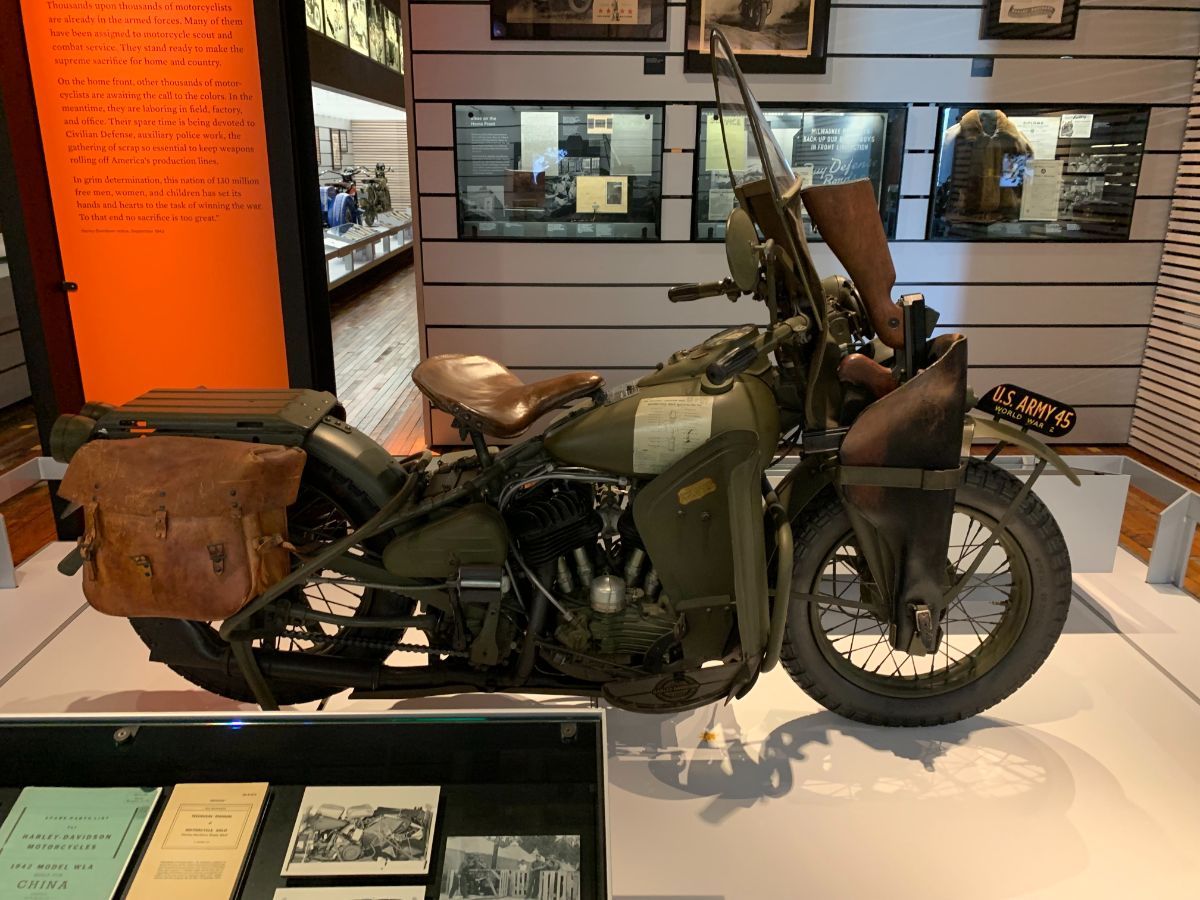
1957 First Sportster
The 1950s were an increasingly tough period for America’s surviving motorcycle manufacturers due to cheaper imports, primarily from Britain, and the growing popularity of the car. Indian went to the wall in 1953 while Harley tried to counter, first with a lightweight 125 two-stroke based on a war reparations DKW design (which wasn’t as successful as BSA’s similar but cheaper Bantam) then with a new smaller capacity, lightweight V-twin, the Sportster in 1957. This came in XL883 and XL1000 forms, which became big successes, the foundation of the XR750 racer and Harley’s longest surviving model. The following year also saw the debut of the ‘DuoGlide’ – the first Harley with front and rear suspension.
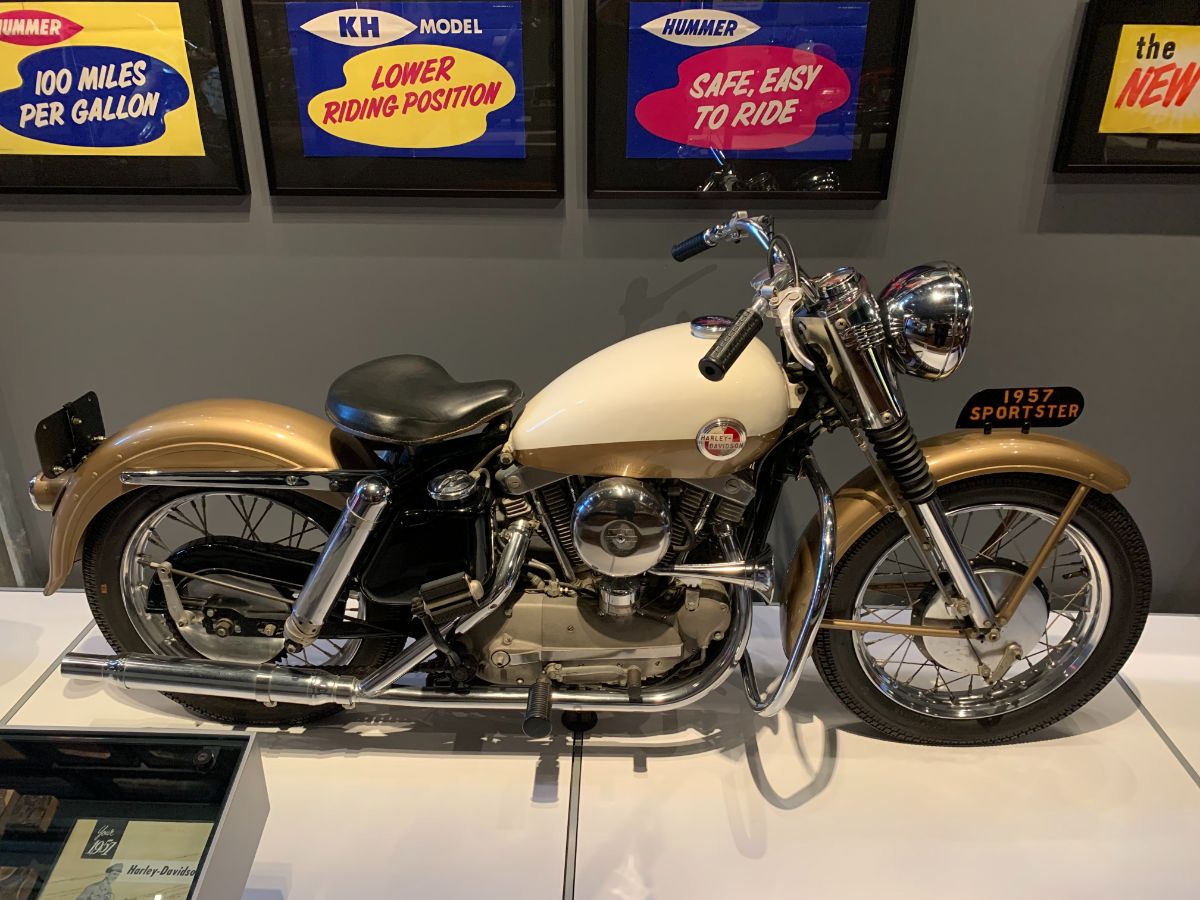
1965 First ElectraGlide
Although the 1960s also proved tough for Harley in the face of British, Italian, German and, increasingly, Japanese competition (so much so that Harley bought Italian marque Aermacchi to build a series of Harley-badged lightweight two-strokes), it did establish itself as the king of American-style touring machines with the launch of the 1965 ElectraGlide, which was effectively a Panhead powered DuoGlide with an electric starter. This model was repeatedly updated, first with the new ‘Shovelhead’ engine in 1966 then, from 1969, with an optional ‘Batwing’ handlebar fairing to complete the definitive full-dress tourer style it maintains to this day.
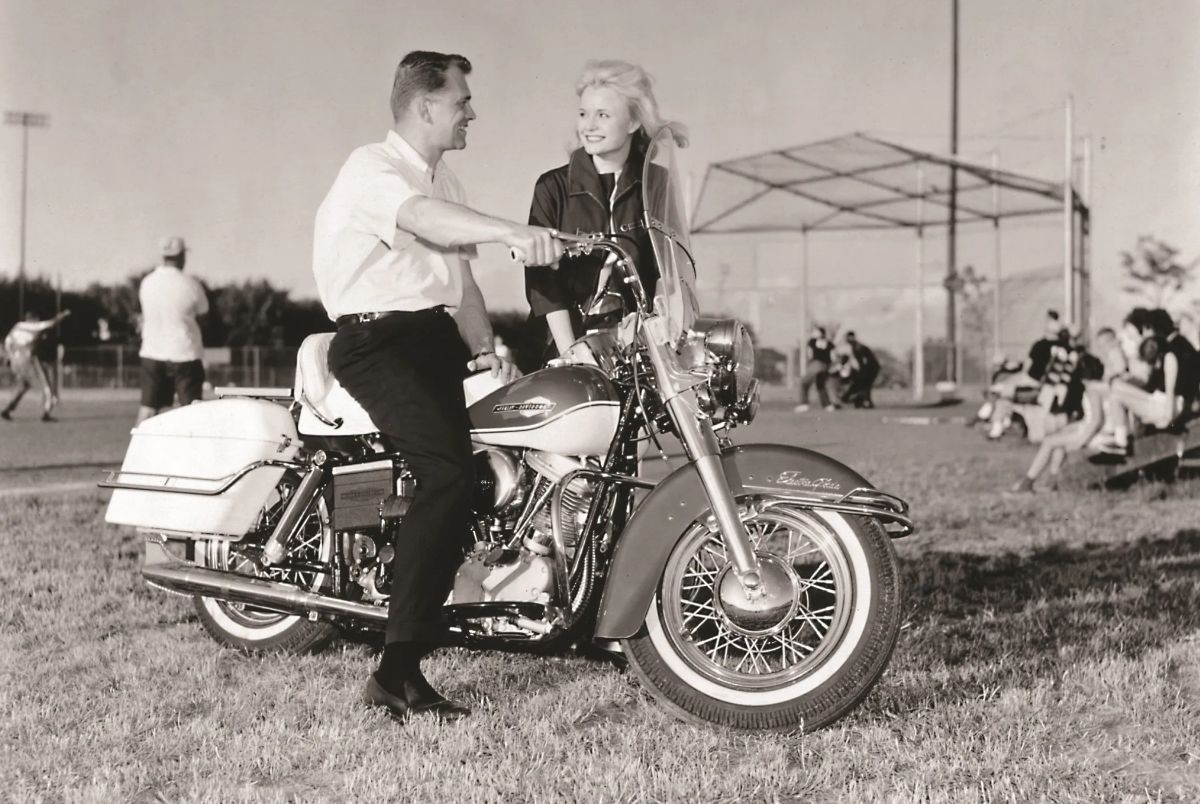
1970s First ‘Factory Customs’
Although Harley-Davidson’s 1971 Super Glide, as inspired by choppers such as those seen in 1969’s Easy Rider, designed by Willie G. Davidson and created by mating a skinny Sportster front end with a fat ‘big twin’ rear, is often heralded as the ‘first factory custom’, it wasn’t a commercial success. But it did show the way for those that followed. Instead, the first successful factory custom was the 1977 Low Rider which, with its highway pegs and ultra-low seat became one of the most influential designs in Harley history.
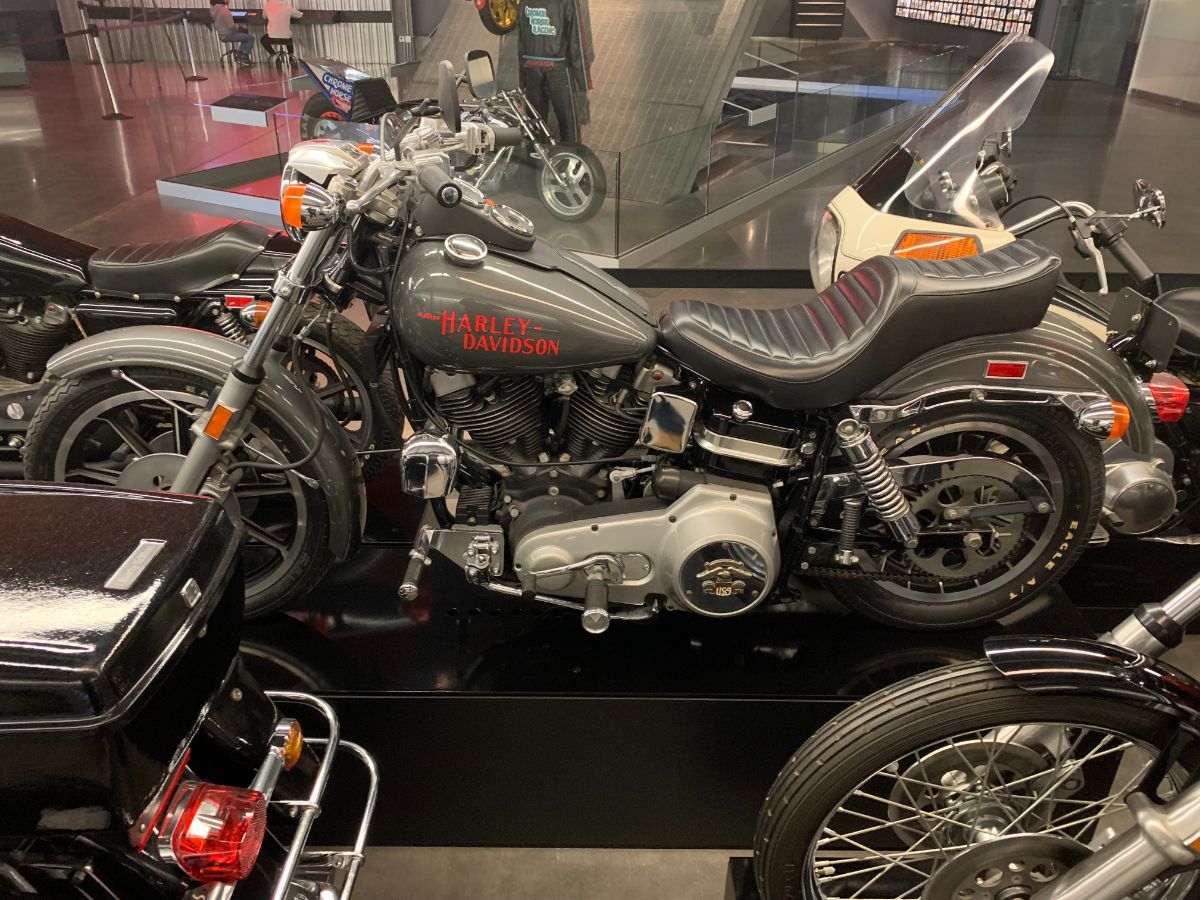
1983 Evolution
The 1980s was a decade of both near-disaster and great change and growing success. After AMF (American Machine and Foundry) took over Harley in 1969, the ‘70s was largely a period of under-investment, poor industrial relations and declining quality and sales, ending in AMF putting HD up for sale in 1981 and it being bought out by a group of 13 directors and investors. Even then, however, HD only began to reverse its fortunes when it introduced the all-new Softail in 1983, a machine which not only debuted the new, all-alloy ‘Evolution’ engine but also the ‘hidden shock’ Softail chassis. An all-alloy Sportster followed in 1986 as did the first, ‘50s style retro, the Heritage, the same year, all were to prove vital success stories.
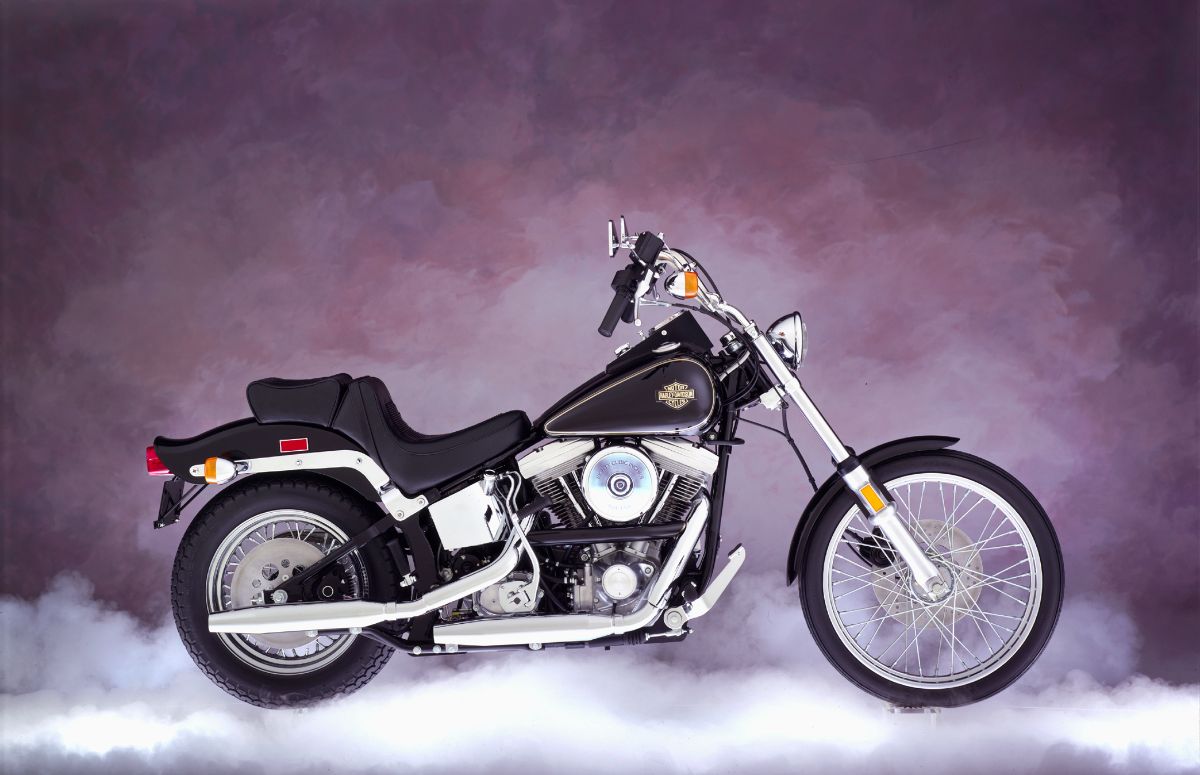
1990 Fat Boy
Created by Willie G. Davidson and Louis Netz and launched in 1990, the Fat Boy is simply one of the most famous and successful Harley-Davidsons of all. Developed during 1988 and 1989, it’s based on the Heritage Softail but with simpler, more ‘industrial-looking’ styling highlighted by its solid disc wheels. An instant hit it went on to further fame and success when it was famously ridden by Arnold Schwarzenegger’s character in the hit 1991 movie Terminator 2: Judgement Day. As a result, it remained one of Harley-Davidson’s best-selling models throughout the 1990s and remains in its line-up, in updated form, to this day.
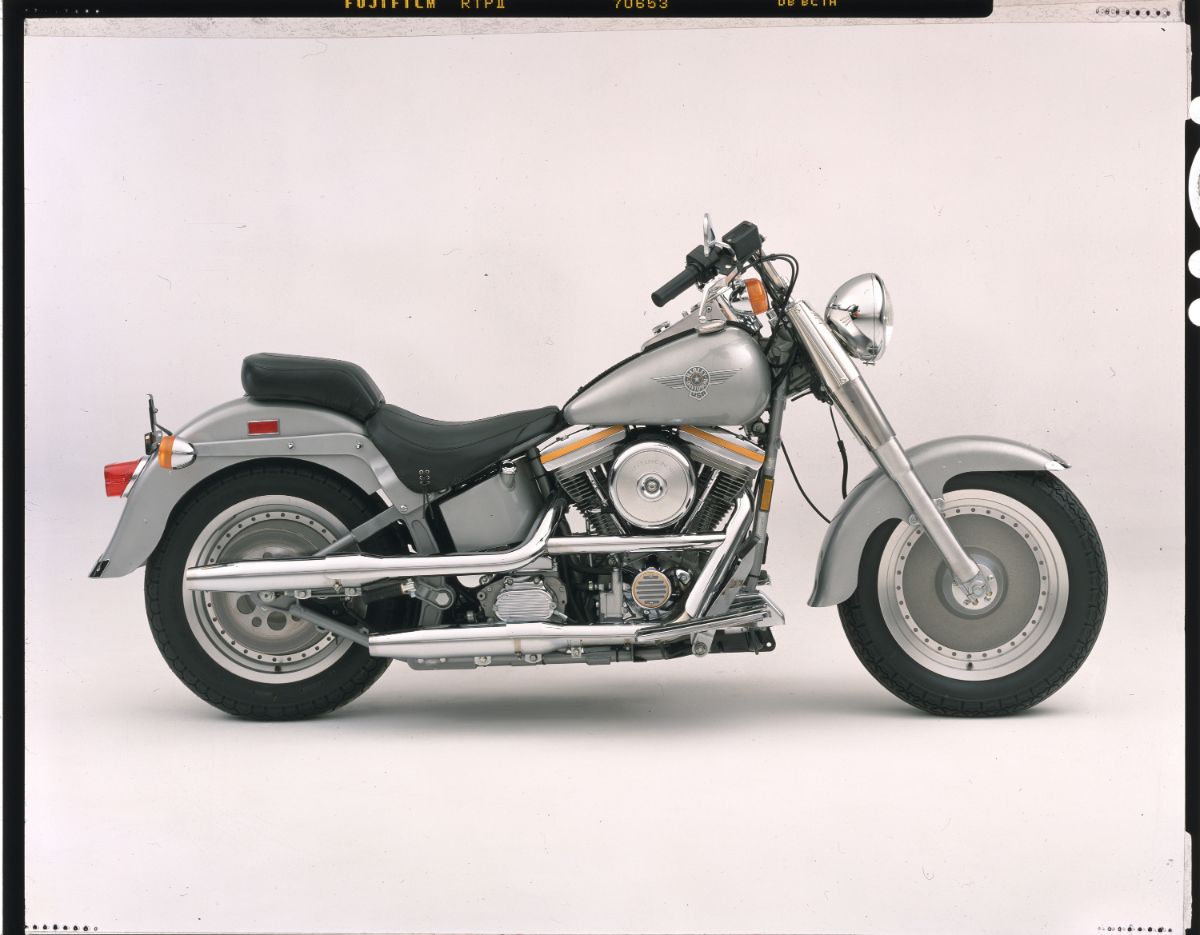
2006 Street Glide – the first ‘bagger’
Although the first Street Glide was launched back in 1984, it wasn’t a huge success and bears little relation to today’s icon. Instead, it was the 2006 version which proved a game-changer. Designed by Willie G. again, legend has it because it was the type of bike he wanted to ride, it’s essentially a ‘cut down’ ElectraGlide, with the screen lowered and the top case removed. The result, however, by appealing to both Harley cruiser fans (for its style) and tourer fans (for its distance practicality) proved an instant sales sensation, spawned a host of imitators to create the ‘bagger’ class and a whole bagger lifestyle involving magazine, shows, websites and even, today, a racing series – King of the Baggers.
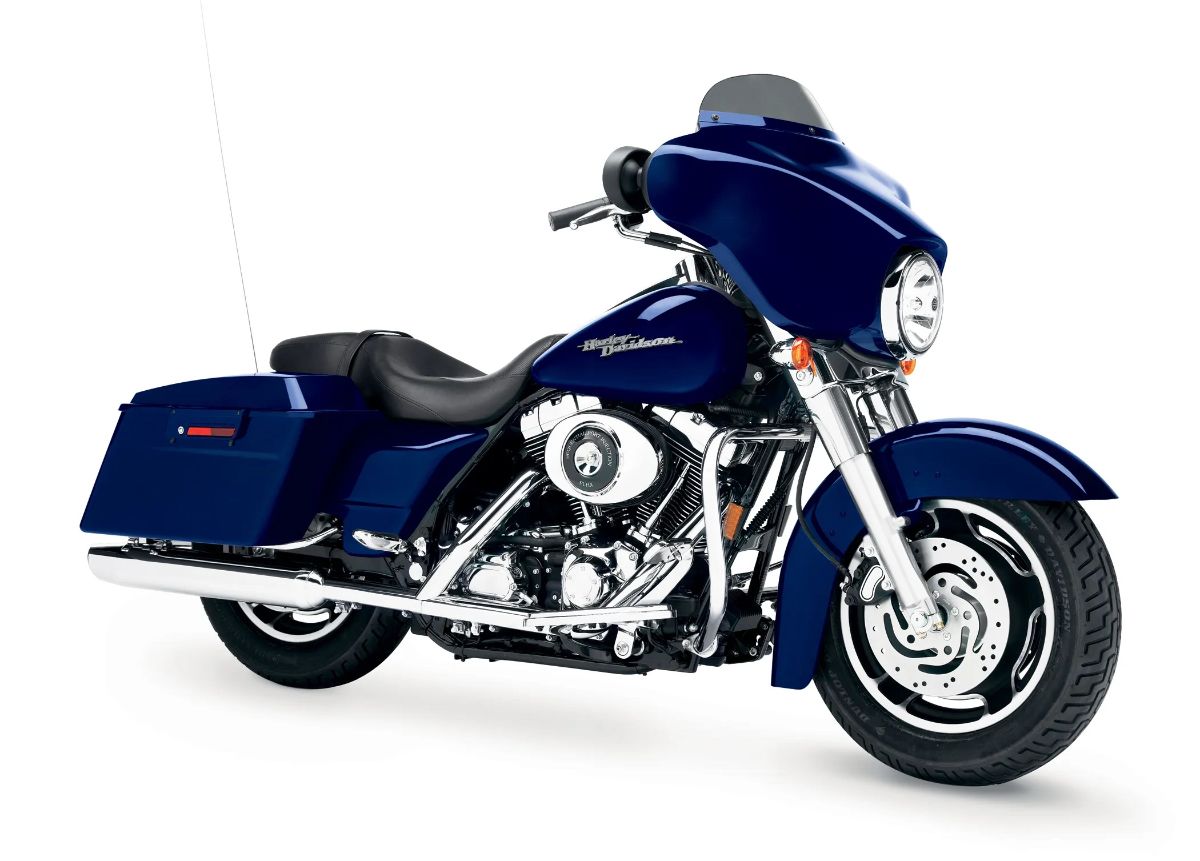
2014 Project Rushmore – touring redefined
Project Rushmore was the name for an unprecented, four-year project undertaken by Harley-Davidson to connect with its customers and fundamentally re-invent its touring machines, including bikes ranging from the Road King to UltraGlide. Although styling was a subtle evolution rather than a wholesale reinvention, the bikes themselves had more horsepower, better handling and braking and greatly improved electronics and rider infotainment. We should also mention Harley’s bold new all-electric LiveWire here, which was launched in 2019, although that bike is yet to have significant sales success.
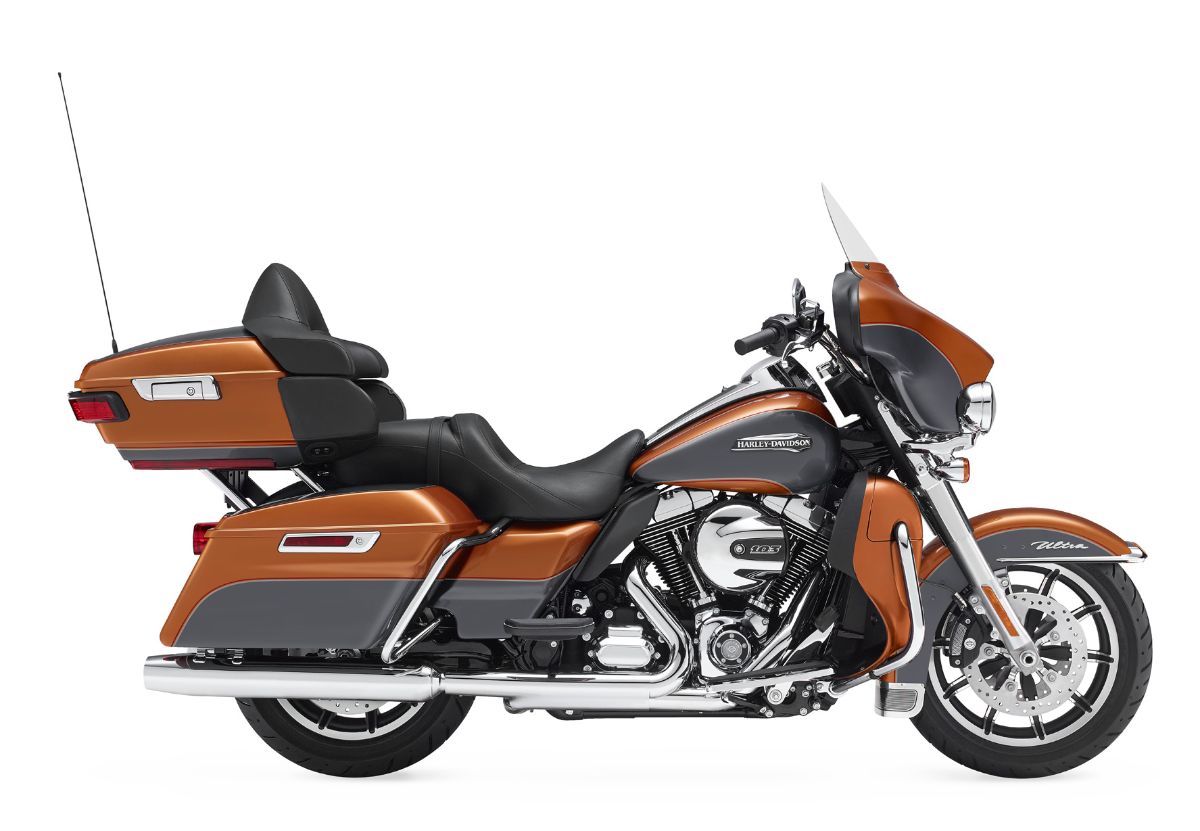
2021 Revolution X – an all-new beginning
After decades of essentially the same air-cooled, pushrod, ‘Big Twin’ Harley powerplants it was inevitable that a truly modern range of liquid-cooled, multi-valve, electronics-laden machines would follow at some point, even if the air-cooled V-twins lumbered on for a while. That point came in 2021 with the launch of the 150bhp Pan America adventure bike, 120bhp Sportster S and, in 2022, the 89bhp Nightster. All were powered by versions of Harley’s new ‘Revolution X’ motor. A new era had begun…
